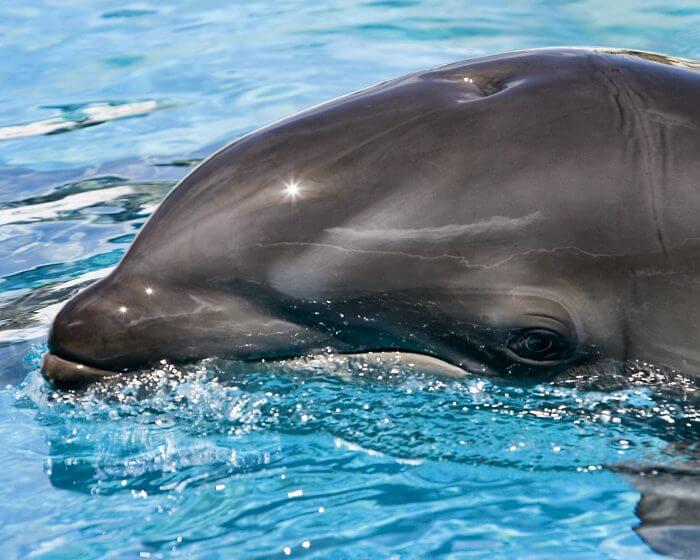By Célia Baratier
This year once again, the research team aboard the BpJAM saw the narwhal! He seems to have made his home in the St. Lawrence for the past three years. As the beluga’s closest kin, the narwhal is also a highly social species. The narwhal in the St. Lawrence can thus be observed hanging around a group of young male belugas. Sharing the same living space is conducive to such encounters, which is enough to wonder whether these two species can reproduce together and produce viable offspring, but also more broadly whether this is possible in cetaceans. A review of literature allowed us to identify 62 possible cases of hybridization.
In baleen whales
Perhaps you’ve heard about the individual harvested in Iceland in July? It had the physical characteristics of a blue whale. Hunting this endangered species is prohibited, however. Following genetic analysis, this individual turned out to be a hybrid between a fin whale and a blue whale, making it the 12th such hybrid reported between these two species. Hybrids generally show the physical characteristics of one of the parents, which makes them difficult to identify with the naked eye as hybrids, and which makes the number of fin-blue whale hybrids underestimated. These hybrids are not necessarily fertile, with just one of the five individuals analyzed being capable of reproducing. This female was even pregnant with a second calf.
Two other hybrid individuals, this time between northern minke whales and Antarctica minke whales, have been observed. One of them was a pregnant female.
In addition, in 2009, a potential hybrid between a right whale and a bowhead whale was photographed in the Bering Sea between Alaska and Russia.
In toothed whales
Delphinidae
A number of cases of hybridization have been reported between delphinids in captivity, but individuals resulting from such cross-breeding are rarely viable. However, the mating of a bottlenose dolphin and a false killer whale gave birth to Kekaimalu, a female of intermediate morphology to both parent species. Kekaimalu in turn gave birth to two young, including Kawili Kai, with a bottlenose dolphin.
In nature, such cases are more rare. Recently, in August 2017, scientists observed and genetically confirmed off the coast of Hawaii a new type of hybrid between a melon-headed dolphin and a rough-toothed dolphin. As only one melon-headed dolphin was in the group, researchers believe it is the mother of the hybrids.
Porpoises
Also, a fetus found in a female Dall’s porpoise was the result of mating with a harbour porpoise.
Narwhal and beluga
In 1990, a skull found in Greenland showed intermediate morphology between an adult narwhal and a beluga. Researchers hypothesized a possible hybrid.
At the crossroads of species
Hybrids are a fascinating and rare subject in vertebrates. Genetic divergence between different cetacean species is generally comparable to that observed between humans, chimpanzees and gorillas. Although sharing of habitat can lead to mating between different species, this does not necessarily lead to the conception of viable offspring. Moreover, they rarely give birth themselves.
Hybridization can be a source of evolution and novelty. However, it can also have an impact on diversity and put already-endangered species at risk if they only breed with individuals of different species.
For hybrids to be considered a new species, they would have to breed amongst themselves and not just with one of the parent species. The Clymene dolphin is believed to be a hybrid species between a striped dolphin and a spinner dolphin.
It is possible that the number of hybrids is underestimated. Although delphinid hybrids show intermediate morphology between the two species, in baleen whales (Mysticeti), hybrids have the appearance of one of the parents, which complicates their identification.







